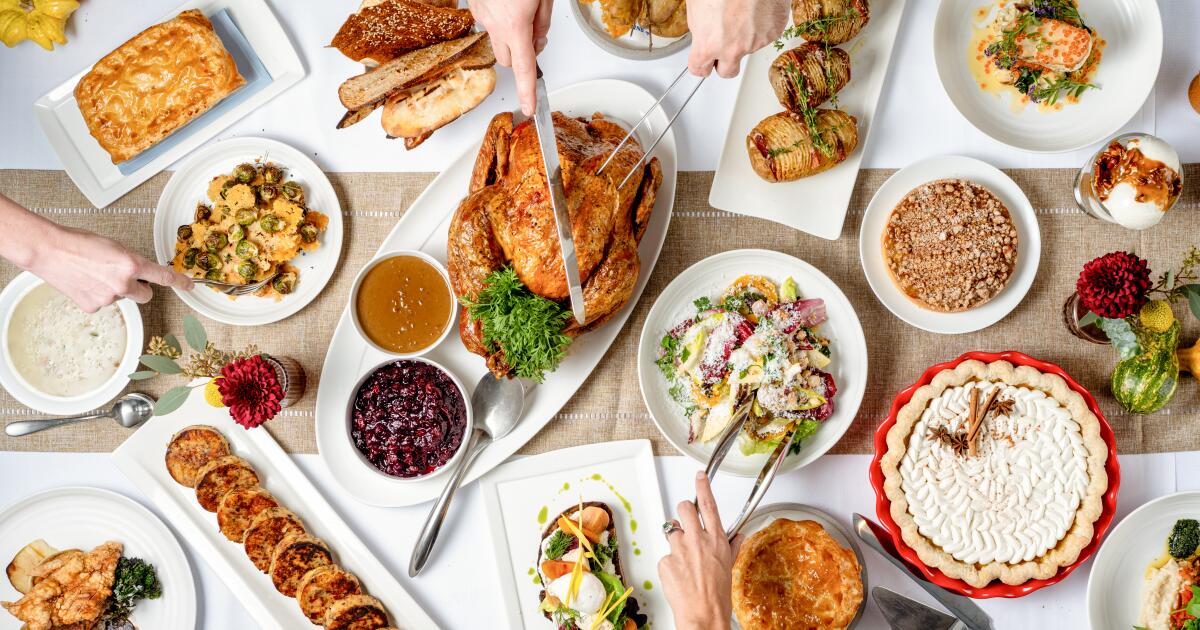L.A. restaurants to order Thanksgiving takeout from this year
For Los Angeles, it’s been a year of triumphs, trials and everything in between. From devastating wildfires to ICE raids that shook our immigrant communities, the city has weathered plenty. Still, L.A. found moments to rally (hello, Dodgers World Series win) that gave us all something to cheer for again.
Thanksgiving is a time to hold onto those small victories and give thanks for the bright spots amid the chaos. But if you won’t be brining a turkey or mashing a bowl of potatoes yourself, there are options.
Thankfully, restaurants across the city are stepping up with take-home feasts. Yes, there are the traditional roast turkeys and glazed hams, but also Caribbean jerk turkey legs, Chinese-inspired chicken ballotines, Indian biryanis, lamb Wellingtons and more.
Whether you’re hosting a big family gathering or keeping things intimate, check out these 26 spots designed to bring comfort, flavor and a little local pride to your Thanksgiving table.
